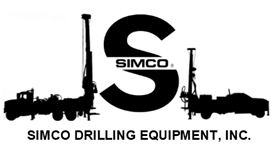It’s that time of year again – tax season! With the December 2017 passing of the Tax Cuts and Jobs Act (TCJA), 2018 is the first tax year with the new changes. One major change is in home office deductions.

If you are self-employed, nothing has changed. You can still deduct direct expenses including maintenance, furniture, equipment, and supplies. The real change comes for employees who work from home, even it is at the employer’s convenience.
In prior tax years, employees could claim unreimbursed out-of-pocket expenses as Miscellaneous Deductions. If you purchased supplies or equipment with your own money to use in a home office so you could work remotely for your employer, and your employer didn’t reimburse you, those expenses are no longer deductible. It’s important to note, however, that a portion of your home-related expenses can still be deducted, whether self-employed or working at home for an employer.
As long as the home office is used exclusively and regularly for business purposes, you can still claim home-related expenses on your 2018 return. By comparing the amount of office space to the total space of your house, that same percentage of costs like mortgage interest, insurance, utilities and security system expenses can be deducted. For example, if your home is 1800 square feet and your home office is 150 square feet, you could claim 8% of your home-related expenses.
Drilling professionals looking to qualify for and claim the home office deduction can choose one of two options.
1) The “regular method” uses the above comparison percentage to determine how much of each expense can be claimed.
2) There is also the “safe harbor” or simplified method. Using a flat rate of $5 per square foot of business use of the home, this reduces paperwork and record-keeping. The second option does have a maximum allowable deduction of $1500, based on a home office of up to 300 square feet.
The TCJA may have done away with employee out-of-pocket expenses, but other changes were put in place to make up for that loss. No matter if you are filing as single or jointly with a spouse, the standard deduction has nearly doubled across the board. The deduction for single or married filing separately jumped from $6350 in 2017 to $12,000 starting in the 2018 tax year. Joint returns are now $24,000 – up from $12,700 in previous years.
Whether you are a self-employed drilling professional or a drilling business owner, the new tax code changes for 2018 may offer some significant tax saving possibilities. Be sure to talk with your tax advisor to learn more.



